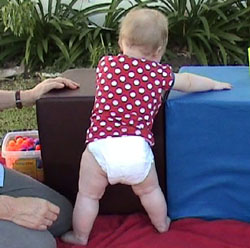Infants with joint hypermobility and low muscle tone, infants at risk for autism, and premature infants tend to reach the important milestones 2-4 months later than typically developing infants.
There are several important underlying reasons for late achievement of standing and walking milestones:
- muscle weakness and tightness associated with joint hypermobility and low muscle tone;
- lack of experience: cautious infants often avoid challenging tasks and as a result do not put in the hours of practice needed for developing the strength, balance and coordination required for walking;
- difficulties with coordination and motor learning associated with developmental coordination disorder,
- autism
- genetic disorders such as William's syndrome
- Down syndrome
- cerebral palsy
- preterm birth
The role of hip muscle tightness
Infants with joint hypermobility, low muscle tone and those born preterm often have some tightness in the muscles that cross over the outside of the hips.
This tightness develops when an infant lies with the legs twisted out at the hips and flat on the cot surface.
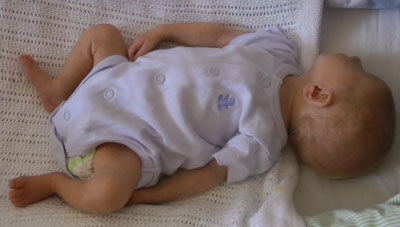
Infants with hypermobile hip joints also tend to sit with the legs twisted out and the thighs flat on the floor.
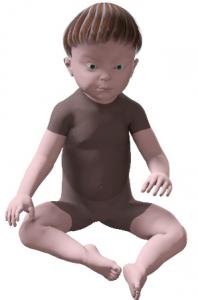
The tendency to abduct the hips can also be seen when the infant lies on the tummy.
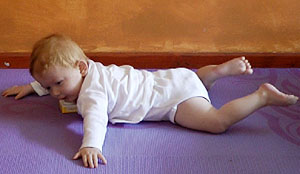
How hip muscle tightness affects kneeling and standing
An infant with tightness in the hip abductor muscles tends to keep hip wide apart when kneeling: this position makes pulling up to standing difficult.
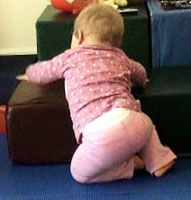
The infant with tight hips abductor muscles also stands with the legs wide apart, sometimes with the knees locked into hyperextension.
This position affects the infant's ability to balance, reach sideways and twist the trunk.
